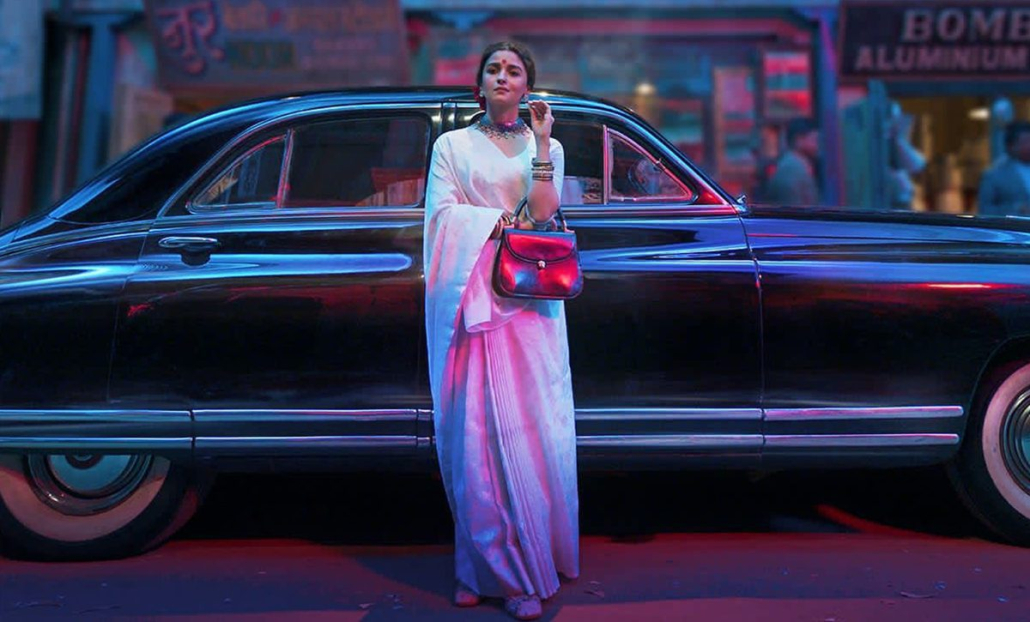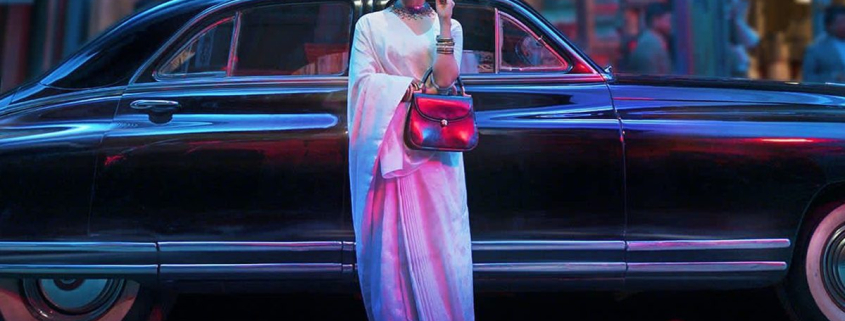‘Gangubai Kathiawadi’: Once Upon a Crime

In the moonlit veins of Kamathipura, a notorious district of Mumbai peppered with Parsi cafes and secondhand bookstores, Indian director Sanjay Leela Bhansali’s “Gangubai Kathiawadi” (2022) unearths an abundance of life.
With street vendors wailing prices of Banta Soda before a lavish New Roshan Talkies theater and the scent of Nalli Nihari inundating every crowded bylane, Kamathipura drips with an old-world charm in every frame, delicately laden with memories of a golden age. Beholding the fractured years of the 1950s through cinematographer Sudeep Chatterjee’s lens, each nuanced set is bathed in this fairytale-like quality.
However, “Gangubai Kathiawadi” never begins once upon a time.
Adapted from “The Matriarch of Kamathipura,” a chapter from S. Hussain Zaidi and Jane Borges’ book, “Mafia Queens of Mumbai,” Bhansali’s newest film chronicles a tightly-woven tale of the lives of sex workers in a red-light district of Mumbai. On that theme, the film’s opening shot reveals a disturbing close-up of a young girl who was recently sold to human traffickers, smothered with cosmetics for an unsettling customer.
This sets up the haunting tone that consumes this movie. Foregrounded by the echoes of Mirza Ghalib’s ghazal: “Yeh na thi hamari qismat” (This was not my destiny), her gut-wrenching shrieks are drowned out by the din of passing trains, as Bhansali and his co-writer Utkarshini Vashishtha indict their audience for turning a blind eye to abuse — in lanes not too far from our own, to people not unlike ourselves.
In wielding this compelling narrative, the story urges our empathetic gaze to linger even further, as the life of the young girl is mirrored by the protagonist, Gangubai Harjivandas Kathiawadi (Alia Bhatt). All-consumed by the world of Hindi cinema and entangled in her own dreams of stardom, Ganga is the naive daughter of a venerated barrister in Kathiawad, who falls prey to the exploitation of her suitor.
Lured to the big city under the pretext of a promised role in a Bollywood film alongside star Dev Anand, Ganga finds herself stranded in Sheila Masi’s (Seema Pahwa) local brothel, chained to her destiny and oblivious to being trafficked into sex work by a man she loved, Ramnik Lal (Varun Kapoor). Somehow, the endless horizons of Kathiawad melt into the four walls of Kamathipura, as they choke Ganga into finding a home in the cracks of the forlorn city.
In a spine-tingling scene where the electricity supply of the neighborhood is cut off, the gallis are lit up by the dwindling radiance of handheld candles. The narrow street is strewn with hints of yellow flickers that accentuate the bodies of the brothel women as objects of desire, who struggle to lure customers into their abode of closed doors. In many ways, this scene exhibits the necessities of their survival, lending it the ethereality that defines the bloodcurdling aesthetic of Sanjay Leela Bhansali. It is here, in the shadows of the darkness, that Ganga sheds her old skin and steps into herself as Gangu, a milestone on her journey to becoming Gangubai Kathiawadi: president of Kamathipura and advocate for sex workers.
In “Gangubai,” Bhansali reveals a throbbing heart. In tandem with his stylistic approach, each carefully choreographed scene placed within a divinely-crafted set spills out of the borders of the screen into the real world. It absorbs its beholders into the lanes of Kamathipura, translating viewers from a mere pair of eyes into stakeholders in the protracted fight for justice.
Although flesh and bones on characters like Gangu’s rakhi brother Rahim Lala (Ajay Devgn) and archnemesis Raziabai (Vijay Raaz) are scant, as broken pieces in Bhansali’s puzzle, they seem to fit just right. Beyond these extravagantly lackluster sets and their cesspool of characters, however, “Gangubai Kathiawadi” — a genre-bending creation in a male-dominated industry — finds an indescribable comfort in Alia Bhatt.
Draped in a swan-white saree against the sunless backdrop of Kamathipura, Bhatt is floodlit with desire. Her youthful features coupled with a rich baritone and black sunglasses offer an incorrigible swagger to her character, bringing “Gangubai” to life with ease. Each delicately painted scene is clotted with a whirlwind of emotions that is complemented with Bhatt’s tailor-made expressions; her eyes, which convey sentiments that shoulder the film’s poetic dialogue-baazi, are marvelously strung together with its lyricism.
For this reason, the audience finds itself filtering through a gamut of emotions, often caught between an intense tear-jerker and a one-line comic relief masterfully delivered by Bhatt. Imbuing layers of mortality to her character that is unfounded in any script, Alia’s “Gangubai” is revolutionary beyond words, with Prime Minister Jawaharlal Nehru’s rose being the exception in her garden of thorns.
In Bhansali’s profound universe, the soundtrack bleeds seamlessly into the film, the characters breathe in syncopation, and the beholder is left with a fragment of infinity that outlives even “Gangubai Kathiawadi.” In the snug silences that conjunct the dialogues, her gaze meets the eye, a bidi rests in the crevices of her lips and her resemblance to the moon permeates the film: “Gangu chand thi aur chand hi rahegi.”
Lost in the midst of a once upon a time and a happily ever after, Bhansali’s Kamathipura is not fraught with princesses, only a mafia queen.

